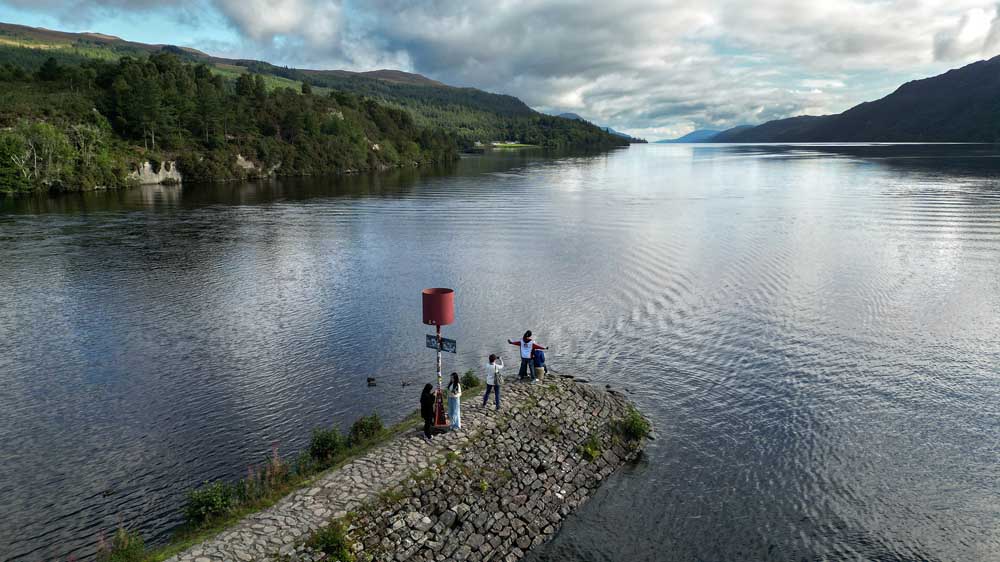Loch Ness monster hunters launch biggest search in decades
Published 5:00 pm Saturday, August 26, 2023

- A general view of Loch Ness ahead of what is being described as the biggest search for the Loch Ness Monster since the early 1970s being held this weekend on Aug. 25, 2023, in Fort Augustus, Scotland. (Jeff J Mitchell/Getty Images/TNS)
DRUMNADROCHIT, Scotland — Is there really a sea monster living in Loch Ness? What is being called the the biggest search for Nessie in decades has begun in Scotland to find out.
In pouring rain, dozens of volunteers from all over the world descended on Loch Ness over the weekend, 90 years after the first alleged sighting of the creature.
Seven-year-old Rowan, who was in Scotland with his parents on holiday, told dpa that he is sure Nessie is a plesiosaur. But many other hunters are sure the creature is something other than a dinosaur.
“It’s something fish-like, maybe an amphibian,” Roland Watson, a blogger who writes about Loch Ness, said on Saturday.
Watson was among the dozens of volunteers who joined the search effort on Saturday at Loch Ness, a lake in the Scottish Highlands that’s 36 kilometers (22 miles) long and up to 2.7 kilometers (1.7 miles) wide.
Volunteers positioned themselves at 17 observation posts around the lake on Saturday morning to watch for any movement or strange waves. Boats with special technology such as a hydrophone — a kind of underwater microphone to detect acoustic signals — cruised the water.
Hundreds more watched the lake remotely via webcams.
The searchers made no new discoveries on Saturday, leaving visiting sightseers disappointed. Local boat captain Ali Matheson blamed the search effort’s failure on the rain: “It’s like Loch Ness putting down the barriers and saying: nope, you won’t find it.”
According to the organizers — the Loch Ness Center for visitors and enthusiasts from the volunteer group Loch Ness Exploration — the effort is the most systematic search for the creature affectionately named Nessie since 1972.
Legends of an elusive monster in the vast, 230-meter-deep (755-foot-deep) lake date from at least the time of St. Columba, who is said to have tamed the beast after it snatched a servant in 565 AD.
Visit Scotland, the country’s official tourist agency, has said there had been “over 1,000 eyewitness accounts and lots of unexplained evidence” in the loch.
A 1934 photograph appearing to show a plesiosaur-like head above the waves sparked huge interest, inspiring several “monster hunts” and scientific surveys over the following decades. Most now believe the photo to have been a hoax.
But speculation, and wishful thinking, persists. Some say Nessie could be a seal, a giant eel, a very large catfish or a porpoise.
Project leader Alan McKenna placed hopes in new technology, including an extremely sensitive hydrophone, the underwater listening device. But on Saturday, choppy waters on the lake caused by rain and the criss-crossing boats spoiled the quality.
There were also plans to use drones equipped with thermal imaging cameras.
McKenna said earlier on Saturday in the nearby village of Drumnadrochit that finding the monster would be nice, but that developing a greater understanding of the lake is the goal.
McKenna said the plan is to build an audio library in which all the sounds and noises from the lake are recorded. The project is expected to take years.
The village, located on the west side of the lake, is now a center of Nessie tourism. Here, in 1933, a local hotel manager named Aldie Mackay reported that she had seen a “whale-like creature.”
A report in the local Inverness Courier newspaper helped create a sensation. The Loch Ness Center is now located in the hotel, which recently reopened after a multimillion-dollar renovation with a large exhibition about Nessie — and is helping to finance the latest effort to locate the supposed creature.
McKenna denied that the search is a publicity stunt, claiming instead that what matters most is science.






